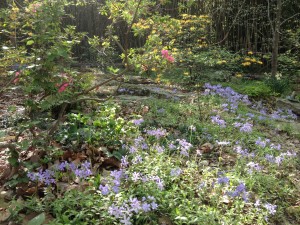
phlox divaricata in the garden….
Wild blue phlox, woodland phlox, wild sweet william – whatever name you choose hardly matters. This native wildflower, Phlox divaricata, graces the most beautiful gardens in Birmingham in the early spring – March and April are its time to shine!
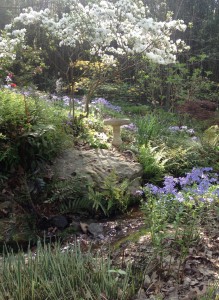
Phlox divaricata shown in
Kris’ spring garden
Find a spot for this one now, while it’s available, and you’ll add another layer of beauty to your garden too. Once established, it spreads readily, yet is never offensive or thuggish. The soft blue blooms have a delicate fragrance that is a subtle greeting as you walk through the garden…and bees and hummingbird moths love it too.
When it’s finished blooming, you can choose to cut it back, which helps tidy it up for summer. Don’t cut all of it back though, if you’d like it to reseed, popping up in other places in your yard – it will make itself at home!
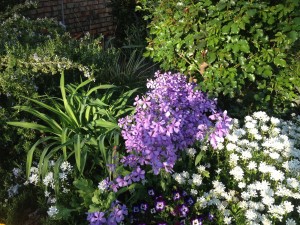
Phlox divaricata enjoying the spring sun before its shaded by the rose bush…
Wild blue phlox is a denizen of my garden that I welcome wherever it chooses to be. Favored conditions are woodland soil or in a cultivated garden, and filtered or morning sun is perfect for it. But I also have some in a hot, sunny bed, a spot where it receives shade in the hottest part of the year by a large rosé bush, retreating in the summer and letting the rose take center stage..
How could anyone not want such a sweet, versatile, native perennial wildflower?
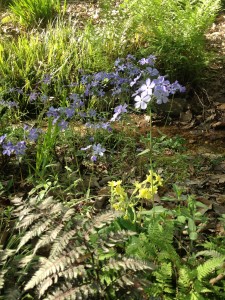
Phlox divarcata is a happy companion with many woodland plants
**Companion plants to consider include:
Columbine species, including the native columbine, Aquilegia canadensis
Perennial ferns, including Southern maidenhair, Japanese painted, tassel, Korean rock and more
Hellebores (Lenten roses)
Solomon’s seal (variegated or green)
Epimedium –
Other wild flowers, including spigelia, (Indian pinks) asarum (ground cover gingers), rue anemone, bloodroot, celandine poppy, Virginia blue bells, Iris cristata
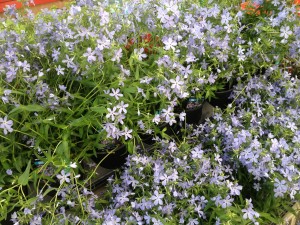
– Posted using BlogPress from my iPhone
